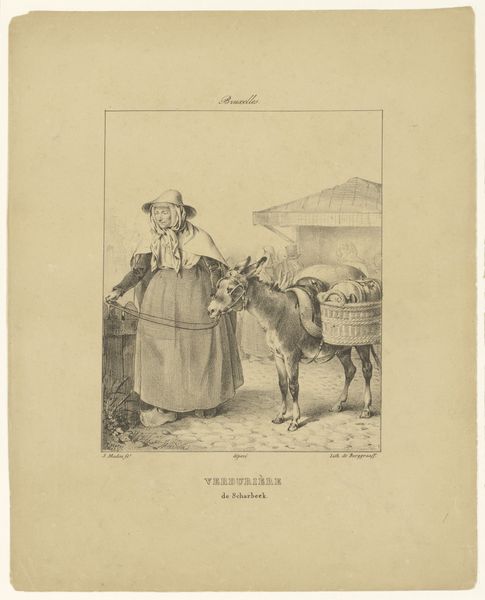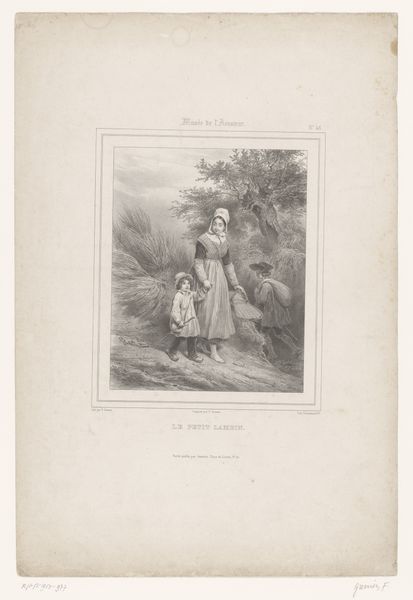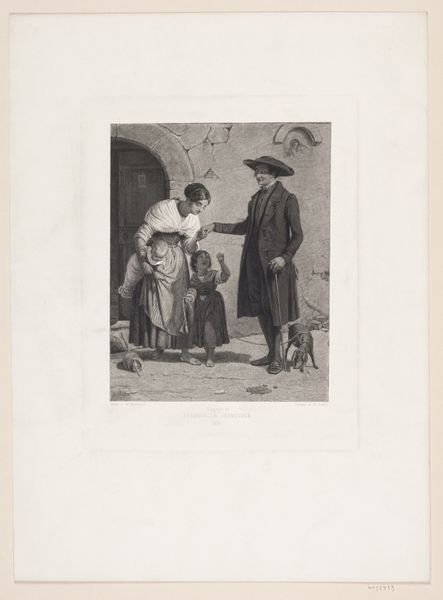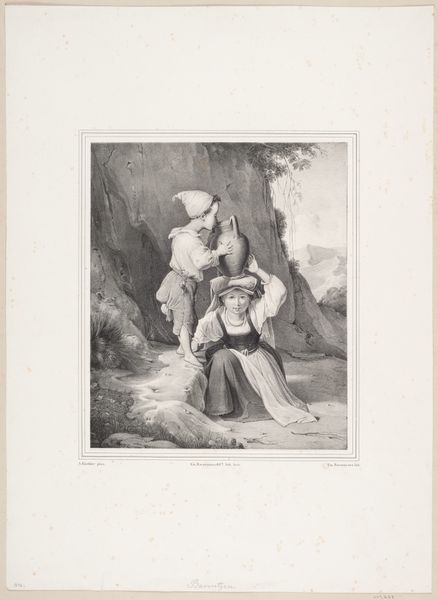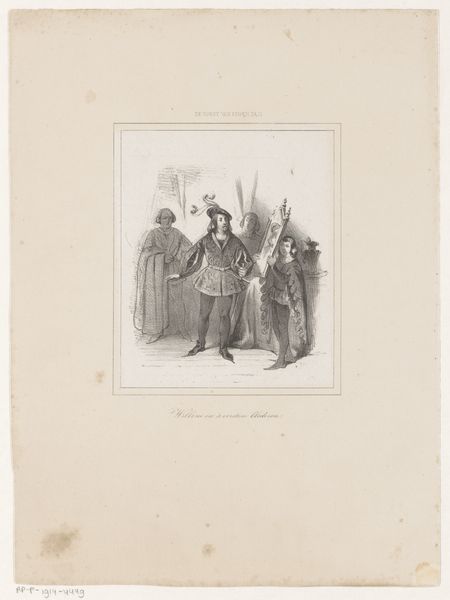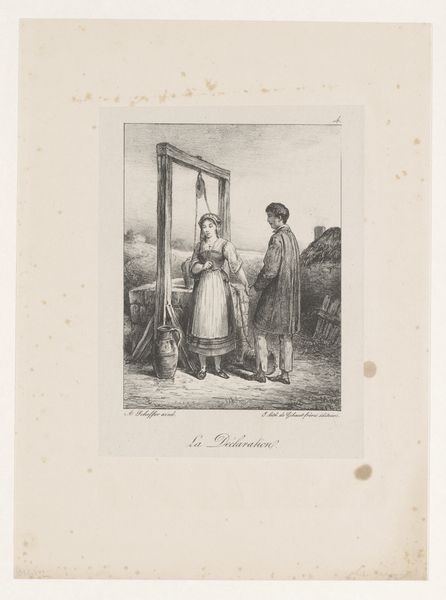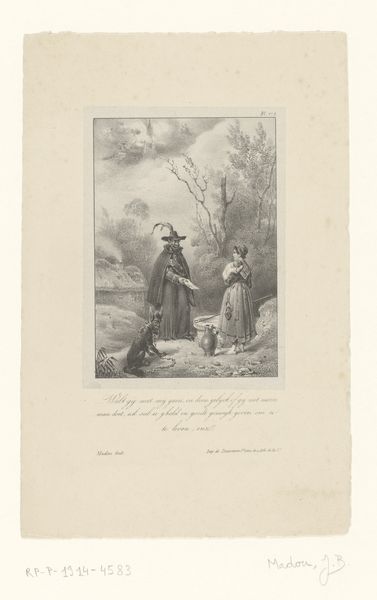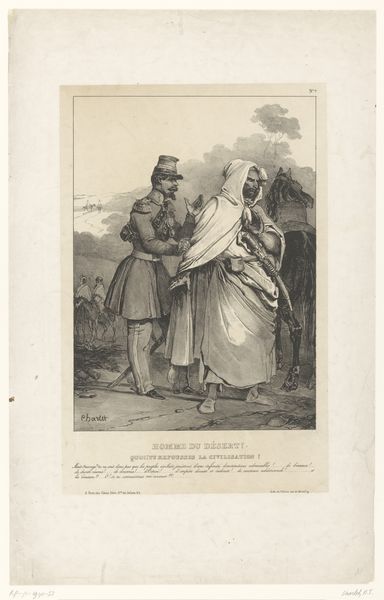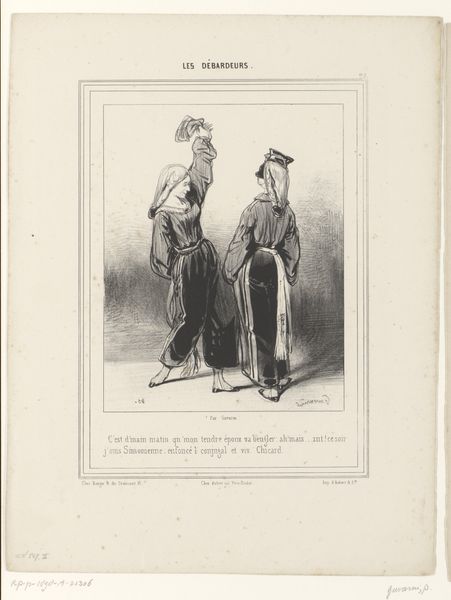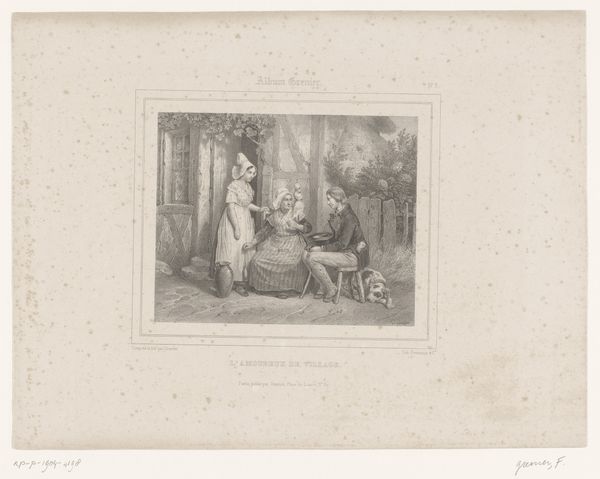
print, engraving
#
portrait
# print
#
genre-painting
#
history-painting
#
engraving
#
realism
Dimensions: height 345 mm, width 274 mm
Copyright: Rijks Museum: Open Domain
Editor: This is "Groenteverkoopster uit Walcheren," or "Greengrocer from Walcheren," an engraving by Jean-Baptiste Madou, created sometime between 1825 and 1835. It depicts two women, one selling produce. The details are so intricate. What's your perspective on this print? Curator: What interests me immediately is the relationship between the figures and the labor implied. We see the greengrocer, burdened by her basket, contrasted with the other woman. Consider the material reality of their lives. What tools would Madou have used to produce this print, and how did the print medium itself democratize images of labor? Editor: That's a good point, it does make you consider the production. Was engraving common at the time? Curator: Engraving, as a reproductive technology, played a vital role in circulating images and ideas. This print allowed for wider access to scenes of everyday life. It’s important to consider the engraver's labor and skill alongside that of the women depicted. What are the social implications of representing these women in this way? Are they romanticized or presented realistically? Editor: I think there's definitely a romanticized element. It seems very idyllic, almost picturesque. It’s a scene carefully composed, like a history painting even though it’s supposed to be of the everyday. Curator: Exactly. Now think about the intended audience for this print. What would their consumption of this image reveal about their relationship to labor, class, and the idea of rural life? Also, notice how the lines create different textures, even implying the weight of the basket or the roughness of their clothing. Editor: That’s true. Looking at it that way makes me think about who *couldn't* afford art. Curator: And also, who produced these images, and under what conditions? These are crucial questions to understanding this work. Editor: This was great. It’s so fascinating how looking at the materials and the labor helps unlock these kinds of prints. Curator: Indeed. By considering the material processes behind this image, we can uncover a rich social history.
Comments
No comments
Be the first to comment and join the conversation on the ultimate creative platform.

